Our wet winter is favoring the growth of a different species of fern here at Curbstone Valley, the California Maidenhair Fern, Adiantum jordanii.
This is the first time we’ve noticed this fern on the property, but until recently we’ve been in an extended period of drought. In early October we started our rainy season with a record-breaking storm, that seems to have set up the perfect conditions for this diminutive fern to grow. Thus far we’ve only found this fern near one of the hillside drainage channels, although its small size does make it easy to overlook.
Adiantum jordanii is a fern that is native to California and Oregon, although numerous other species of Adiantum are found throughout much of the United States. This fern prefers to grow on shaded hillsides and in moist woodland, and here it is growing along the toe of an east-facing slope that receives very little direct sunlight, in the company of Coast Redwoods, Western Sword Ferns, Redwood Sorrel and Trillium.
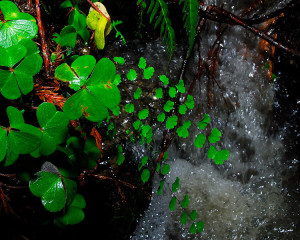
Shaded by tall redwoods, this fern grows in the company of other shade-loving natives, including redwood sorrel, and Western sword ferns
California Maidenhair Ferns typically are found growing below 3500 ft. The fronds of this fern are composed of narrow black, wiry, stems with delicate fan-shaped leaves that resemble the shape of ginko leaves. This elegant fern is often elusive, hiding amidst other native vegetation, and during periods of drought will become dormant.
Western Native American tribes are known to have had a number of uses for Adiantum jordanii. The Costanoan’s used decoctions of this plant as an analgesic, a blood purifier, a gynecological, and digestive aid. The Pomo and Kashaya both used the stems of Adiantum jordanii in basketry, and jewelry making, using the stems as ‘wires’ for earrings [1].
As native plant gardeners here in California, it is important for us to be aware that some plants are hosts for Phytophthora ramorum, the pathogen responsible for Sudden Oak Death in California. This pathogen has already devastated many native oaks in this region, especially the tanbark-oak (Lithocarpus densiflorus).
As beautiful as this fern is, Adiantum jordanii is a known host for the Sudden Oak Death pathogen. Therefore, this species is best appreciated growing in its native woodland habitat, and not relocated into cultivated gardens.
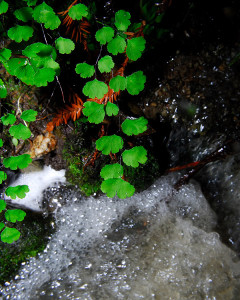
California Maidenhair fern has very specific cultural requirements, and usually does poorly in cultivation
Even before the advent of Sudden Oak Death, this fern has had a reputation for being very difficult to grow, and as a result has rarely proven successful in cultivation. If you find these ferns growing near you, it is wise to resist the urge to attempt to move, transplant, or share California Maidenhair Ferns with other gardeners, to avoid spreading this disease further.
[1] Daniel E. Moerman’s Native American Ethnobotanical Database

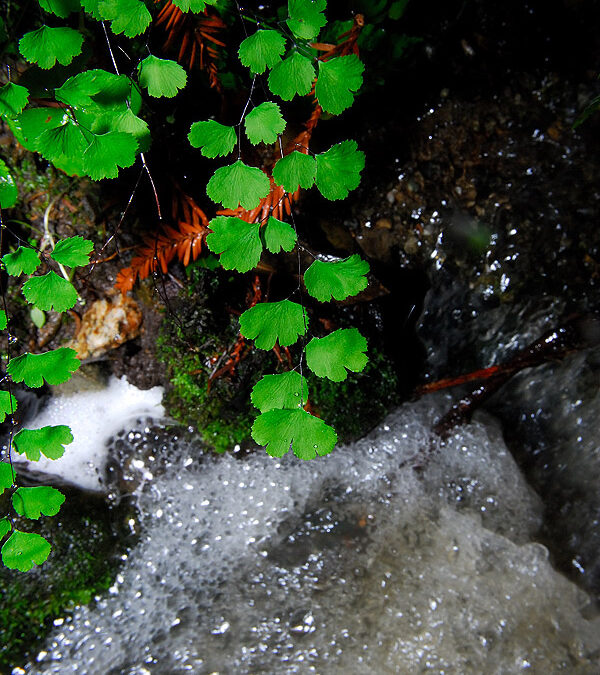

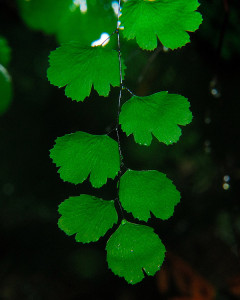
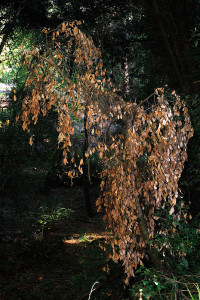







It’s such a pretty fern, it’s too bad it’s a host plant for Sudden Oak Death.
How very dramatic, and how awful for you. I found your account most interesting.
I love the delicate leaves of the Maidenhair Fern.
She’s like an Odyssean siren, luring you in with her beauty and then killing your oaks without blinking! I’m happy to view her from a distance.
Lucky you, I only see them in the nursery and thanks for the interesting information too. It is so delicate, fragile, just beautiful. My favorite fern.